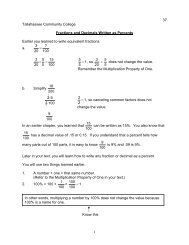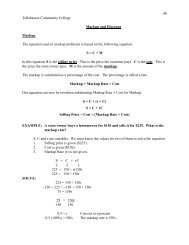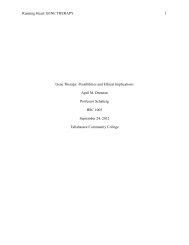Independent, Dependent and Mutually Exclusive Events
Independent, Dependent and Mutually Exclusive Events
Independent, Dependent and Mutually Exclusive Events
You also want an ePaper? Increase the reach of your titles
YUMPU automatically turns print PDFs into web optimized ePapers that Google loves.
<strong>Independent</strong> <strong>and</strong> <strong>Dependent</strong> <strong>Events</strong>INDEPENDENCE (“not affecting”)Two events are independent if the occurrence of one does not affect the probability of theoccurrence of the other.Example: Consider the events of flipping a coin <strong>and</strong> tossing a six-sided die.1coinHTdie23456The probability of getting heads in a single toss of a fair coin is 1/2.The probability of getting a four in a single roll of a fair die is 1/6 regardless of the results of thecoin toss.The two experiments are independent because the result of the coin toss does not affect theprobability of the outcome of the die roll.DEPENDENCE (“affecting”)Two single events are dependent if the occurrence of one does affect the probability of theoccurrence of the other.Example: Four different colored balls are in a bag. Two balls are to be drawn from the bag insuccession (without replacing the first ball before the second ball is drawn). Consider the eventsof pulling a blue ball out on the first draw <strong>and</strong> pulling a blue ball out on the second draw.first drawbluewhitegreenredsecond drawbluewhitegreenThe probability that the first ball drawn is blue is 1/4. Suppose the red ball is drawn first. Theprobability the second ball will be blue is 1/3.On the other h<strong>and</strong>, if the first ball drawn is blue, the probability the second ball will be blue is 0because there would be no blue balls left in the bag.The two events, pulling a blue ball out on the first draw <strong>and</strong> pulling a blue ball out on the seconddraw, are dependent since the outcome of the first draw does affect the probability of drawing ablue ball on the second draw.This instructional aid was prepared by the Tallahassee Community College Learning Commons.
<strong>Mutually</strong> <strong>Exclusive</strong> <strong>Events</strong> (“not at the same time”)For a single experiment, two events are said to be mutually exclusive if they cannot occur at thesame time.Example: A single card is drawn from a st<strong>and</strong>ard 52-card deck. Drawing a card that issimultaneously a red card <strong>and</strong> a club cannot occur because these events are mutuallyexclusive.A st<strong>and</strong>ard 52-card deck26 red cards(13 diamonds)(13 hearts)26 black cards(13 clubs)(13 spades)red cardsclubsFor example, if a 5 of clubs is drawn, it is not a red card.As shown above in the Venn diagram, the sets of red cards <strong>and</strong> clubs are distinct <strong>and</strong> separate;therefore the two events are mutually exclusive.Not <strong>Mutually</strong> <strong>Exclusive</strong> <strong>Events</strong> (“at the same time”)Example: A single card is drawn from a st<strong>and</strong>ard 52-card deck. Drawing a card that is bothblack <strong>and</strong> a club is possible. The two events are not mutually exclusive because they can occursimultaneously.clubsblack cardsIf a club is drawn, it is also a black card since all clubs are black. Therefore the two events arenot mutually exclusive.Example: A single card is drawn from a st<strong>and</strong>ard 52-card deck. Drawing a card that is both afive <strong>and</strong> a black card is possible. The two events are not mutually exclusive because they canoccur simultaneously.fivesblack cardsThe five of clubs <strong>and</strong> the five of spades are simultaneously fives <strong>and</strong> black cards. Thus, theevents drawing a club <strong>and</strong> drawing a five are not mutually exclusive.This instructional aid was prepared by the Tallahassee Community College Learning Commons.


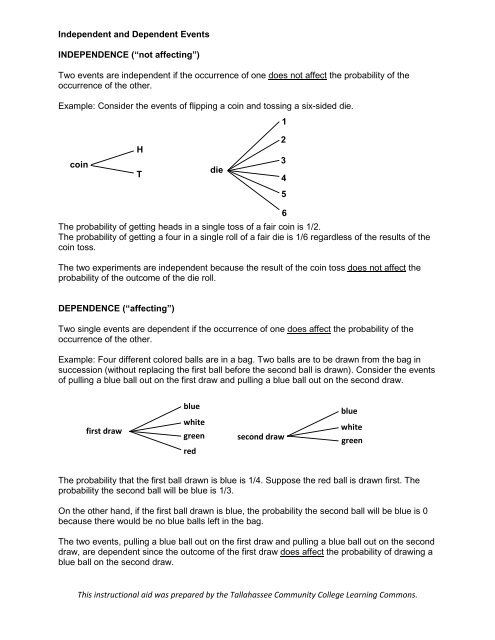



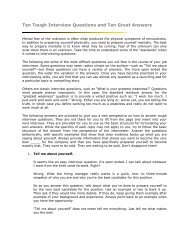
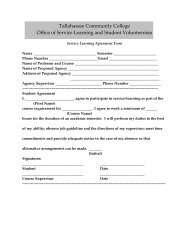
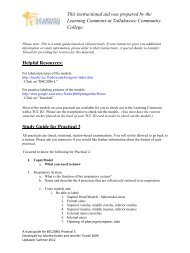
![[ ]2 [ ] [ ]x](https://img.yumpu.com/48761194/1/190x245/-2-x.jpg?quality=85)
